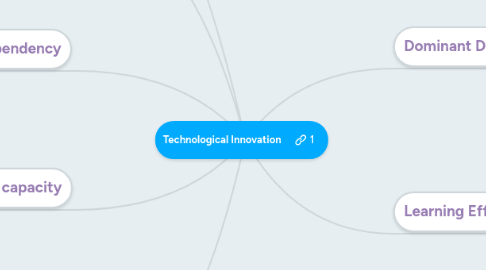
1. Absorptive capacity
1.1. Phenomenon whereby as a firms accumulate knowledge they also increase their future ability to assimilate information.
2. Network externalities
2.1. Also know as, "consumption externalities" and it is when the value of a good to a user increases with the number of other users of the same similar good. Example: Railroads and telecommunications (phones).
2.2. Installed base
2.2.1. Number of users of a particular good. The installed base of a particular video hame console refers to a number of those consoles that are installed in home worldwide.
2.3. complementary goods
2.3.1. Additional goods and services that enable or enhance the value of another good. Example: the value of a video game console is directly related to the availability of complementary goods as video games, peripheral devices, and services such as online gaming.
2.4. They arise when the value of good to a user increases with the size of the installed base. This can be due to number of reasons, such as need for compatibility or the availability of complementary goods.
3. Path dependency
3.1. When end results depend greatly on the events that took place leading up to the outcome . It is often impossible to reproduce the results that occur in such a situation.
4. Multiple Dimensions
4.1. Increasing returns means when the rate of return (not just gross return) from a product or process increases with the size of its installed base.
4.2. Utility levers
4.2.1. purchase, delivery, use, supplements, maintenance and disposal.
4.3. Buyer experience cycle
4.3.1. costumer productivity, simplicity, convenience, risk, fun, image and environmental friendliness.
5. The combination of network externality returns to market share and technological utility will influence at what level of market share one technology will dominate one another.
5.1. For industries
5.1.1. The full network externality benefits are attained at a minority market share level.
5.1.1.1. In this industries, multiple designes are likely to coexist.
6. Dominant Design
6.1. A single product or process architecture that dominates a product category. Basically a "de facto standard", meaning that it may not be officially enforced or acknowledge, it has become standard for the industry.
7. Learning Effects
7.1. Ample empirical evidence shows that the more a technology is used, the more it developed and the more effective and efficient it becomes.
7.1.1. Generates sales revenues + accumulative experience, find ways to use the technology more productively, including developing an organizational context that improves the implementation of technology.
7.1.1.1. Learning curve: impact cumulative production on cost and productivity.

